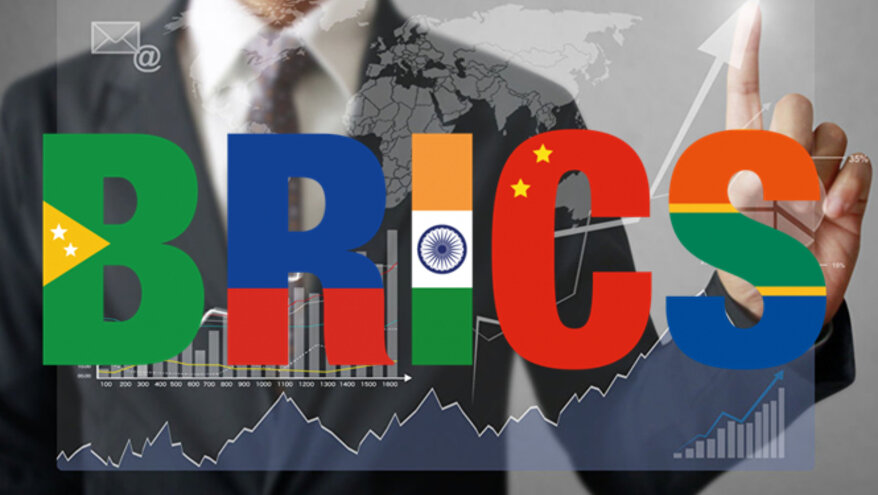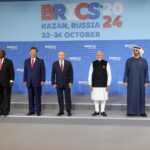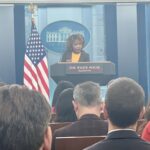U.S. President Donald Trump’s sweeping tariffs on key members of the BRICS grouping are triggering a diplomatic and economic response that could strengthen the bloc’s cohesion and increase its challenge to American global influence, officials and analysts say.
The latest round of U.S. tariffs – including a 50 percent duty on goods from India and Brazil, and penalties on South African and potentially Chinese exports – was aimed at isolating individual BRICS economies. But instead, it appears to be accelerating coordination among Brazil, Russia, India, China and South Africa, who see the measures as a common threat.
“The intention may have been to divide and pressure, but the effect is that these countries are finding more reasons to work together,” said a senior Indian government official briefed on recent diplomatic exchanges.
Washington has long viewed the BRICS bloc with caution due to its growing economic weight and push for a multipolar global order. The five countries collectively account for around 40 percent of the world’s population and about one-third of global GDP.
Trump’s tariff measures are being interpreted by many in the group as a strategic attempt to blunt BRICS’ growing influence, particularly as India prepares to take over the bloc’s rotating presidency later this year.
Tariffs Target Each BRICS Member
The White House imposed a 25 percent base tariff on Indian goods earlier this year, followed by an additional 25 percent “penalty” in July over India’s continued imports of Russian oil. Brazil was hit with a 50 percent tariff, officially over domestic political developments, while South Africa faces a 30 percent duty on mineral exports. China, which has a temporary exemption on new tariffs expiring August 12, is also expected to be targeted in the next round.
China has criticized the moves. “We oppose the abuse of tariffs,” Chinese Foreign Ministry spokesperson Guo Jiakun said at a recent briefing, referring to the U.S. action against India. A spokesperson for the Chinese Embassy in India added that China and India should deepen trust and widen cooperation, rejecting what it called “Western narratives” that seek to pit the two against each other.
Prime Minister Narendra Modi is expected to visit China later this month for the Shanghai Cooperation Organization (SCO) summit, his first since border clashes in 2020, in what Indian officials describe as a signal of “strategic pragmatism” amid rising external economic pressures.
Lula, Putin Signal Support for India
Brazilian President Luiz Inácio Lula da Silva also weighed in, expressing support for India’s position on “unilateral trade aggression.” He spoke with Modi last week and accepted an invitation to visit India in early 2026, backing greater integration between BRICS members.
Lula has rejected direct talks with Trump, accusing the U.S. of trying to coerce developing economies through trade policy. “We cannot allow the global economy to be held hostage to the whims of a single country,” Lula said in remarks to Brazilian media.
Russia, which has deepened its energy ties with India since the Ukraine conflict began in 2022, has also criticized the U.S. approach. Kremlin spokesperson Dmitry Peskov said this week that Washington’s pressure on countries like India to cut trade with Moscow was “illegal” and violated national sovereignty.
Russian President Vladimir Putin is expected to visit India later this month, underscoring the continued strength of bilateral ties despite Western pressure.
BRICS Gains Momentum Despite Internal Gaps
While BRICS has often been dismissed as a fragmented bloc with divergent interests, Trump’s tariff campaign may be helping forge common ground, analysts say.
“In facing coordinated economic pressure, the incentives for these countries to close ranks are rising,” said a diplomat involved in BRICS working group discussions.
Internal differences, including tensions between India and China, remain significant. However, officials in New Delhi and Beijing have recently spoken of compartmentalizing disputes to pursue common interests in trade and global governance.
Efforts to trade in local currencies and reduce reliance on the U.S. dollar are also gaining traction. The BRICS-led New Development Bank has begun offering loans in non-dollar currencies, and proposals for a shared payments system have gained new attention.
A Strategic Backfire?
“The more Washington tries to coerce through tariffs, the more these countries are incentivized to build alternatives,” said an economist who advises multilateral institutions. “In trying to weaken BRICS, the U.S. may inadvertently be helping consolidate it.”






